What additional features can rakes have? |
||||
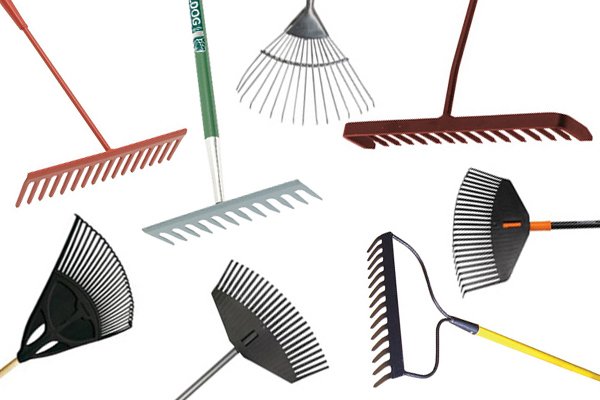 |
Many of the rakes available today come with added features, designed to make them easier to use or more efficient at particular jobs. The type of rake you need, and the features that make tasks easier, depend on what you want to use the rake for and personal preferences.
For more information see: What are the different types of rake? |
|||
Hanging hole |
||||
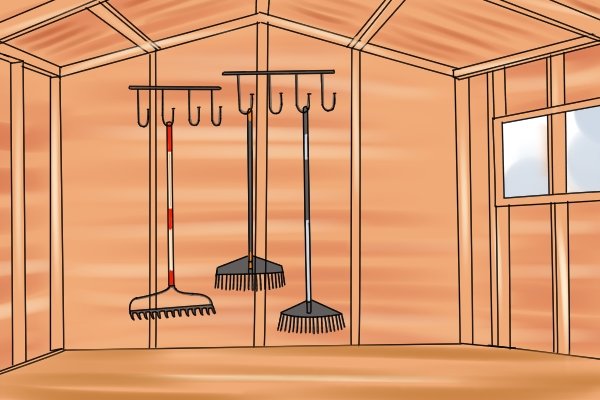 |
Quite a few rakes will come with a hanging hole, so they can be stored off the ground. These holes will be at the end of the handle, meaning they can be hung with the tines facing downwards. This is an alternative to using the head, supported on two pegs or nails, to hang them. | |||
Clog-free tines |
||||
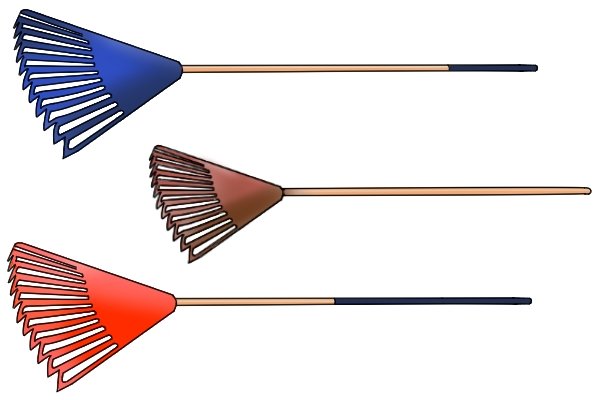 |
Clog-free rakes have tines which are joined at the ends, creating a wave shape, rather than individual prongs. These tines are designed so they don’t hold onto leaves or other garden debris. This feature means the tines should not get clogged and need clearing out frequently, allowing you to work for longer periods without needing to stop. | |||
Rubber tines |
||||
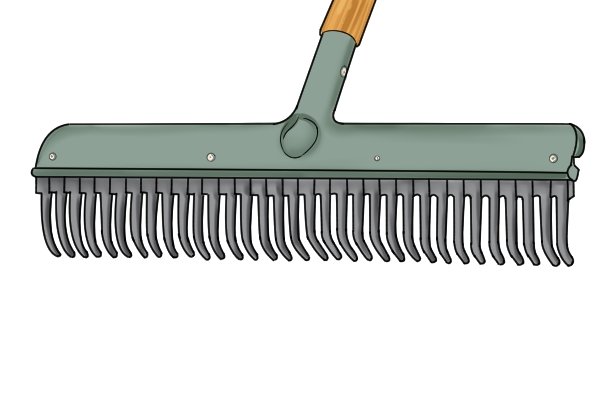 |
Some rakes are made with rubber tines. These are soft, so they’re especially gentle on the ground, while still being able to gather up light garden waste. They would not be suitable for clearing heavier items like stones, as the tines will not hold any heavy materials. | |||
Adjustable tines |
||||
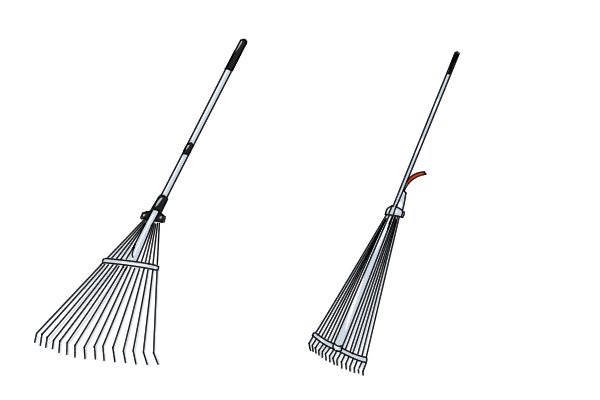 |
Rakes with adjustable tines are sometimes called expanding rakes. They are usually lawn rakes with tines in a fan shape that can be widened or narrowed. They are opened out for use in larger areas, and reduced for raking in tighter spaces. They have an adjustment handle to move the tines forwards or backwards through a fixed brace to widen and narrow the head. | |||
Telescopic handles |
||||
 |
Telescopic rakes have adjustable handles. The handles can be extended, to reach further, or retracted, for more control working close up. | |||
Angled handles |
||||
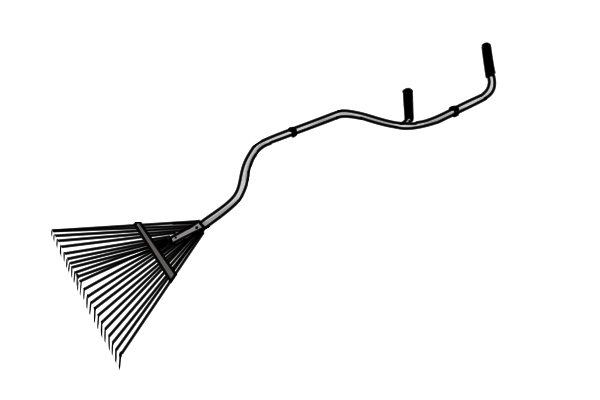 |
Some rakes have a handle which has been ergonomically designed, which means it should be especially comfortable and easy to use. The handle is angled in a way that puts less strain on the user when they are working with the rake. | |||
Extra grip handles |
||||
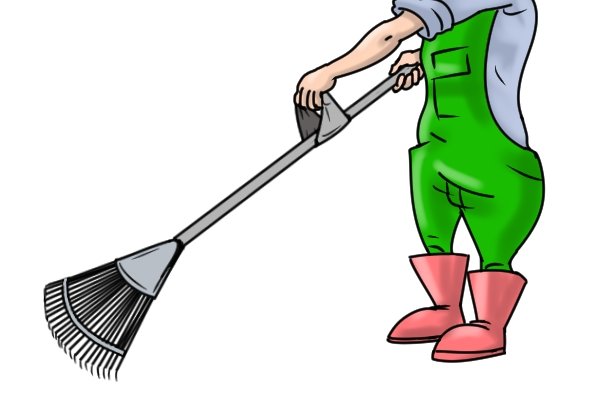 |
To make using a rake easier, some of them have an extra handle to grip. These handles may come already fixed onto the rake, or they can be brought as an addition to attach to a standard rake. They allow the user to easily grip the rake part-way down the handle. If they are purchased separately they can usually be interchanged onto other garden tools with similar handles, such as shovels and hoes. | |||
Narrow heads |
||||
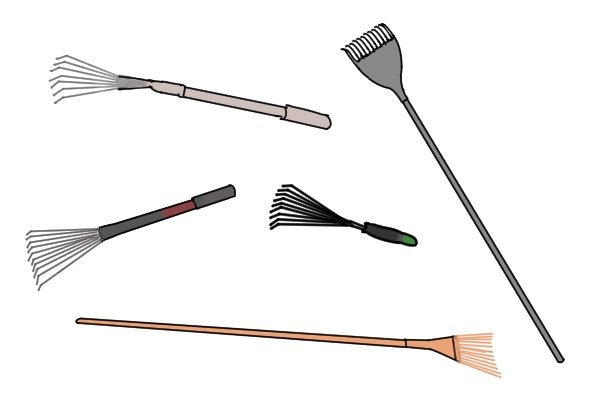 |
Rakes with particularly narrow heads are usually called shrub rakes, and sometimes rose rakes. Shrub Rakes are available in designs which resemble leaf rakes, lawn rakes or garden rakes. They are designed to be used in small areas, where a standard rake’s head would be too wide. They usually have long handles, to be used standing up, but some are short hand rakes. | |||
Angled heads |
||||
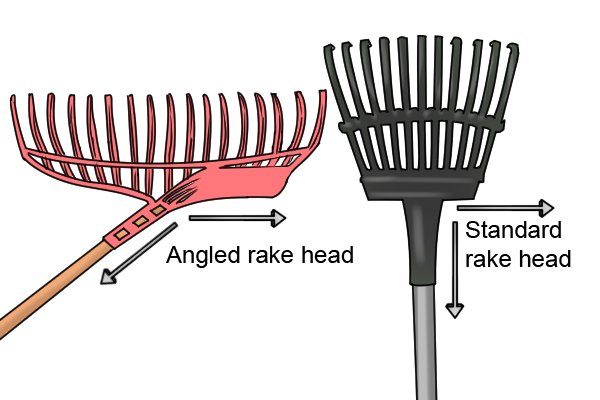 |
Some rakes have a heads which are angled, designed to makes them easier to use. They are designed to be ergonomic, so they should be comfortable to work with. This design is usually found on rakes used to gather materials – the idea is to make it easier to sweep materials to the side of where you’re standing. | |||
Rounded heads |
||||
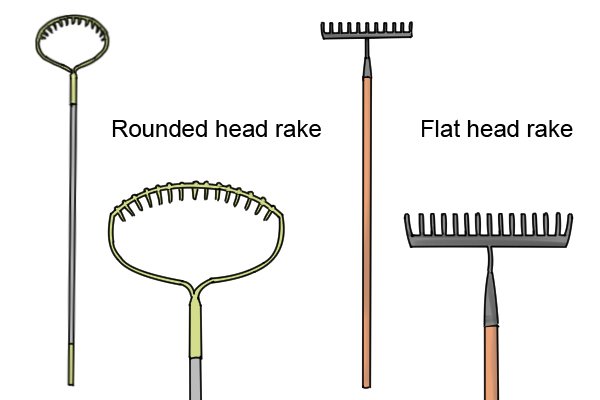 |
Most garden rakes have heads which are straight, often referred to as flat heads. However, there are some which have a rounded head. This design makes it easier to gather debris, which is less likely to fall out from the edges of the head. | |||
Pivoting heads |
||||
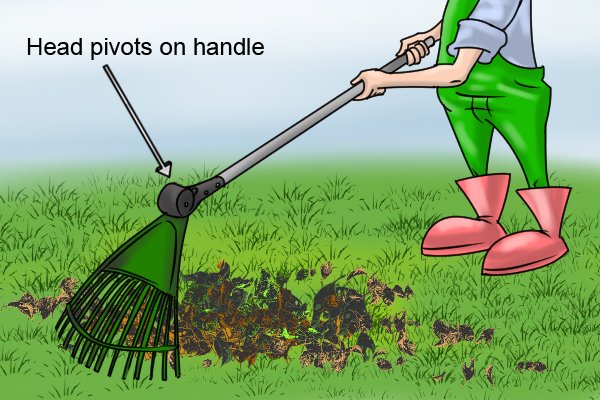 |
Some rakes have heads that can pivot. They swivel on their handle up to 270 degrees, which means they can be set in various positions for moving leaves in different directions. The head can be locked at any position of the 270 degrees. This feature is designed to make it more comfortable to work with, for personal preferences and different ways of working. | |||
Wheels on heads |
||||
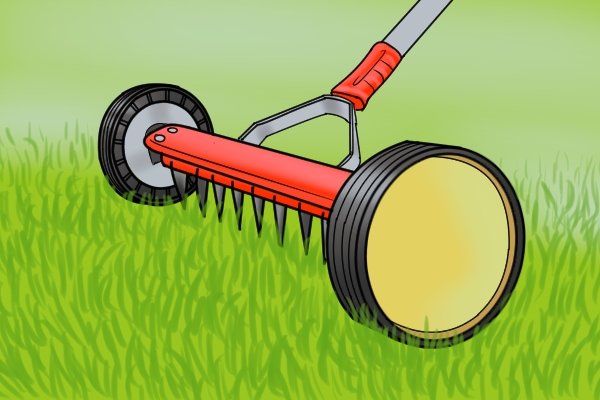 |
Rakes that have wheels on the heads are useful for working in parallel lines across surfaces. The wheels assist in keeping the head straight as it is moved. This feature also allows you to keep the rake’s tines at a constant height when working. Thatch rakes sometimes have this feature to help control the depth the tines can dig into the ground. | |||
Replaceable heads |
||||
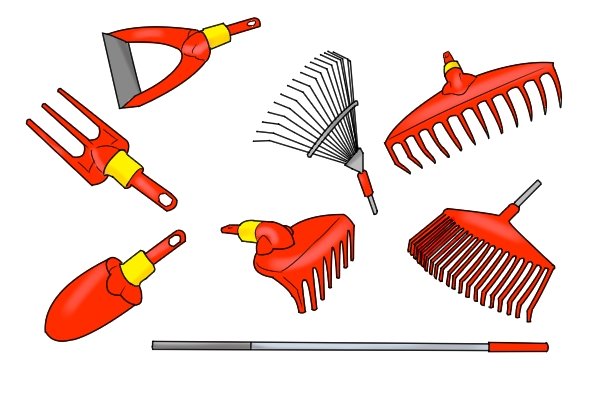 |
Some manufacturers produce rakes where the head can be removed from the handle. These heads can be easily replaced with the head of a different rake, or even another tool, like a hoe or fork. These interchangeable parts mean you only need one handle for a variety of tools, saving space for storage. | |||
Built-in tamps |
||||
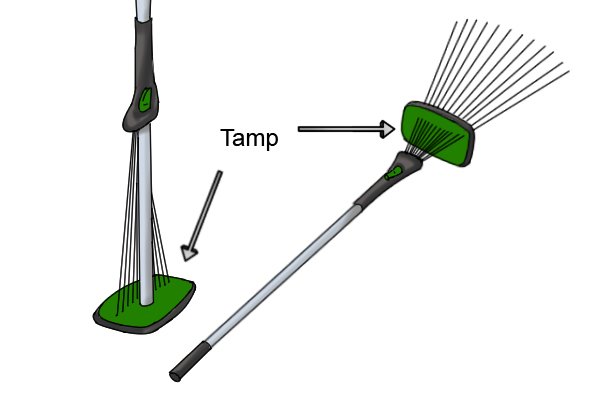 |
There are lawn rakes that come with a built-in tamp, to compact piles of leaves in bags or bins. The tamp forms the head. The tines attach to a sliding handle which when pushed downwards, force the tines through holes in the tamp, fanning out to form the rake. Moving the handle upwards retracts the tines back up through the tamp until the ends of the tines are pulled against the underside of the tamp, preventing the tines from pulling out completely. The rake can now be used as a tamp. | |||
Rakehoes |
||||
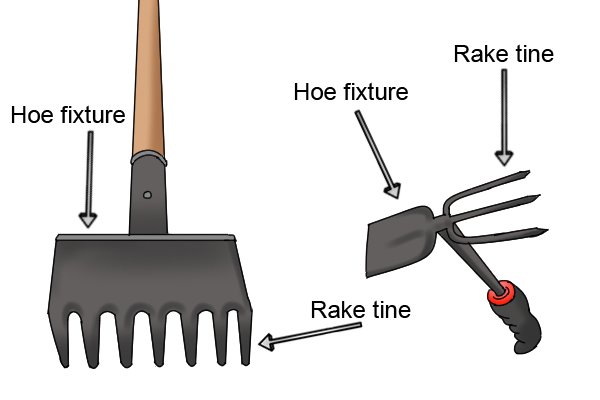 |
Some rakes are available with the addition of a hoe fixture on the head. This tool works as a rake and hoe in one, which eliminates the need for two separate tools. The hoe can be used to dig small trenches and move small amounts of soil. This feature can sometimes be found on standard size rakes, as well as small hand rakes. | |||






